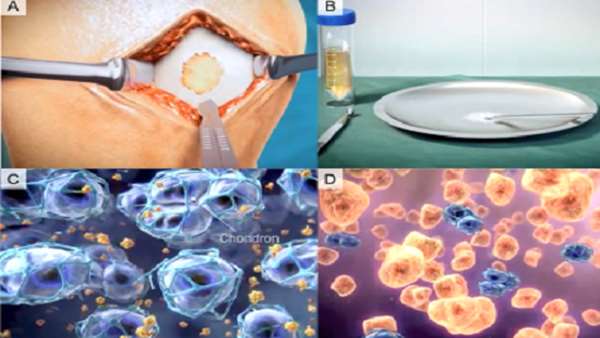Successful First in Man Trial for MSC-based Cartilage Repair
Previous studies from the laboratory of Daniel B. F. Saris (University Medical Center Utrecht, The Netherlands) reported that a novel stem cell combination represented a safe and efficient means to repair cartilage in preclinical and early clinical studies
Previous studies from the laboratory of Daniel B. F. Saris (University Medical Center Utrecht, The Netherlands) reported that a novel stem cell combination represented a safe and efficient means to repair cartilage in preclinical and early clinical studies. Their combination strategy involves allogeneic mesenchymal stem cells (MSCs) that provide trophic support to stimulate the cartilage-producing activity of patient-derived chondrons (chondrocytes with their native matrix) isolated while preparing the damaged cartilage for repair.
This successful strategy has now progressed to the next level, and a study in STEM CELLS provides a comprehensive description of the first-in-man trial in 35 patients and an 18-month follow-up.
Here are all the relevant points relating to this exciting new trial:
- Mean patient age of 30 ± 8 years and a mean articular cartilage defect size of 3.2 ± 0.7 cm2
- No treatment-related serious adverse events observed, suggesting the safety of the procedure
- Treatment led to an improvement in clinical outcomes and a statistically significant reduction in mean pain scores, suggesting efficacy
- Magnetic resonance imaging (MRI) and second-look arthroscopies indicated the presence of newly formed cartilage tissue
- Biopsies demonstrated hyaline-like features and a high concentration of proteoglycans and type II collagen in the repaired tissue
- Short tandem repeat analysis confirmed that regenerated tissues contained patients DNA only, and so newly produced cartilage derived from the patient’s chondrons and not donor MSCs
- This finding indicates a supportive role for MSCs to provide trophic support to co-transplanted cells
The combination of MSCs and recycled chondrons shows no signs of weakness, but the researchers behind this exciting study are not resting on their laurels. De Windt et al. note that their ongoing work now hopes to form a strategy which shortens treatment times, so allowing broader availability and improved efficiency, to dissect the underlying regenerative mechanisms at play, and to investigate means to enhance the activity of MSCs.
http://onlinelibrary.wiley.com/doi/10.1002/stem.2657/abstract





ارسال به دوستان